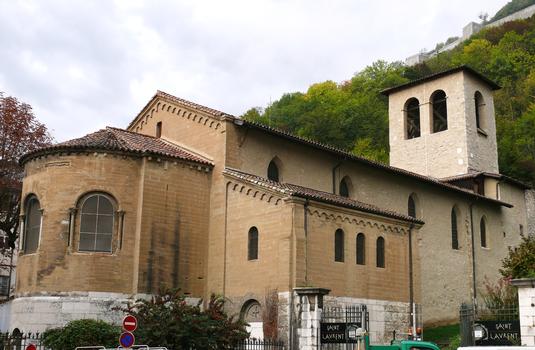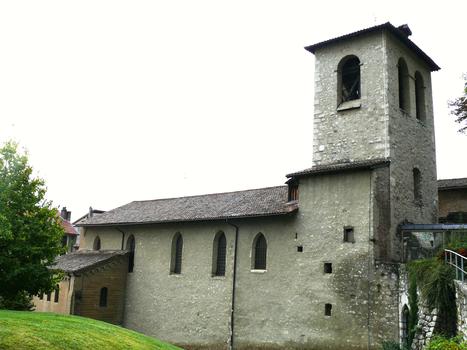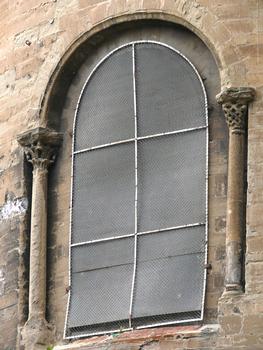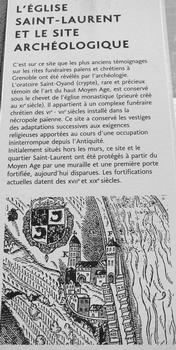General Information
| Status: | in use |
|---|
Project Type
| Material: |
Masonry structure |
|---|---|
| Function / usage: |
original use: Church current use: Museum building |
Awards and Distinctions
| 1977 |
church
for registered users |
|---|
Location
| Location: |
Grenoble, Isère (38), Auvergne-Rhône-Alpes, France |
|---|---|
| Address: | Place Saint-Laurent |
| Coordinates: | 45° 11' 51.47" N 5° 43' 53.30" E |
Technical Information
There currently is no technical data available.
Excerpt from Wikipedia
Grenoble Archaeological Museum is a museum located in Grenoble, France. It occupies the historic site of Saint-Laurent at the foot of the Bastille on the right bank of the Isère.
The building
Saint-Laurent church was built on the remains of a Gallo-Roman necropolis. The church itself is essentially Romanesque, but it is characterised by a complex layering of buildings and structures, among which the hidden gem is the crypt which dates from the 6th century.
Conservation
The crypt was classified as a historic monument in 1850. Protection was extended to other parts of the church and, in 1977, the entire site.
The church was deconsecrated in 1983, in order to become first an archaeological site and then in 1986, a museum.
History
A priory associated with the church was closed in 1790, after which St Laurent had the status of a parish church. The site has been studied since the beginning of the 19th century. In 1803, the discovery of the Merovingian crypt attracted attention. In the first half of the nineteenth century, three men revived the architectural interest of this church:
- archaeologist Jacques Joseph Champollion-Figeac
- inspector general of ancient monuments Prosper Mérimée
- architect Pierre Manguin.
A first museum was created in 1846, between the church of St Laurent and a house occupied by the industrialist Xavier Jouvin. It consisted primarily of headstones covered with inscriptions, dating from the Gallo-Roman period of Cularo.
The entire site is classified as a historic monument since 10 August 1977. A museum opened in 1986, in the deconsecrated church of St Laurent, but closed from 2003 for work, and reopened to the public in May 2011, with a new original staging.
The church of St. Laurent today is a Romanesque church of the twelfth century. The conservation status of the church funeral (sixth century) excavated in the basement, with its crypt makes it a unique archaeological site in France.
The site, from the early fourth century mausoleums, has witnessed an architectural constant adaptation to changing attitudes, pagan practices to Christian beliefs.
Text imported from Wikipedia article "Grenoble Archaeological Museum" and modified on January 11, 2024 according to the CC-BY-SA 4.0 International license.
Participants
Currently there is no information available about persons or companies having participated in this project.
Relevant Web Sites
Relevant Publications
- (1972): La crypte et l'église Saint-Laurent de Grenoble. Presented at: Session. Congrès archéologique de France vol. 130 (1972), pp. 243-263.
- : Dauphiné roman. Editions Zodiaque, Saint-Léger-Vauban (France), pp. 37-45.
- About this
data sheet - Structure-ID
20017741 - Published on:
11/09/2005 - Last updated on:
21/12/2023








